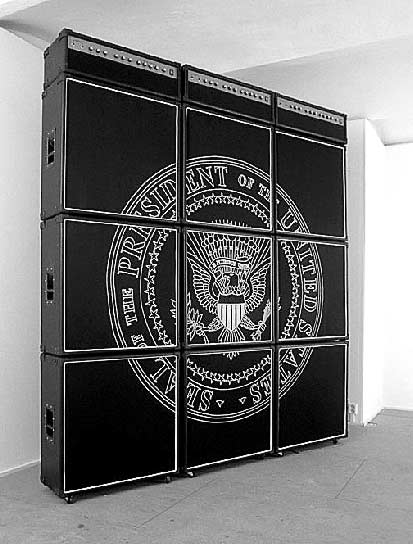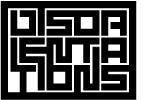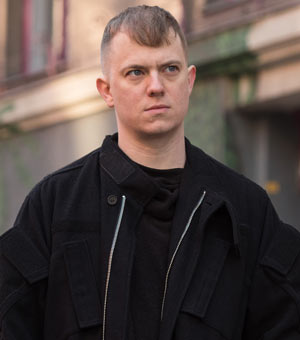IN MEMORIAM: Jan Jakub Kotík (1972-2007)
by Travis Jeppesen on March 29, 2008
In December, the Czech Republic lost one of its most promising young artists to cancer. I first came into contact with Jan Jakub Kotík when I was commissioned to write an essay on his work by Umelec. I did not know Jan well, but I quickly became a fan of his work, and was fortunate enough to spend a few hours in his presence. While I have never been a huge fan of conceptual art, and have long felt that it is needlessly overdone in this part of the world, Kotík’s work was imbued with a freshness and fierceness that is frequently unsettling. Kotík wasn’t merely a brilliant conceptualist; he was also a highly skilled craftsman – a combination that has become increasingly rare in this age and milieu.
Jan’s work was not the only thing that made him an enigma in the Czech art scene. An American by birth, a New Yorker by training and default, Kotík was ultimately a Czech – and from one of the country’s most distinguished families at that (his great-great grandfather was Tomas Garrigue Masaryk.) While the biographical details surrounding Kotík and his family are intriguing, it is for the extraordinary body of work left behind that Jan will ultimately be remembered.
Kotík first caught the attention of the artgoing public in 2000 with his solo exhibition, Economies of Scale, in which he exhibited tiny household appliances intricately constructed out of model airplane and tank parts. What seemed at first like a joke was actually a startling commentary on the corporations that produce mundane household objects – the same manufacturers responsible for the development and production, in collaboration with the U.S. government, of radar technology, guided missiles, spy ware, satellites, and various other militaristic technologies employed in the wars of the last century.
Kotík’s best-known work, however, is probably Hail to the Chief. The piece is comprised of a floor-to-ceiling stack of “Marshall” amplifiers that the artist actually built himself, with the American presidential emblem emblazoned on the center in gold. The speakers blare a modified sample of the guitar intro to Black Sabbath’s “Iron Man,” which is digitally manipulated to evoke the sound of air raid sirens and planes flying overhead. Heavy metal and fascism converge in a singular synaesthetic invocation of the global political deity himself. The piece not only transmits an ironic political message through its loud appropriation of national imagery, but provokes a range of contradictory emotions that the viewer is forced to confront.
From talking to Jan, I got the impression that he truly loved Prague. Like a lot of gifted young people living in this city, however, I think he also felt frustrated at times by the fact that artists here are only reluctantly given the attention they deserve – and seldom in doses that one needs to develop. Jan enjoyed being a part of the local art scene and loved to indulge in gossip about its protagonists, just like the rest of us. At the same time, having spent his formative years in New York, where he studied at the prestigious Cooper Union for the Advancement of Science and Art, I think he also felt stifled by the pettiness and provincialism that often shades foreigners’ impressions of the Czech art scene.
Outside of the time I spent admiring his work, I’ll always cherish the precious few memories I have of the time I spent with Jan. We bonded over our mutual love of heavy metal, and shortly after I finished writing my piece on his work, we celebrated by attending a Cannibal Corpse concert. We always promised to hang out more often, but as sometimes happens, our lives wound up taking different paths. I stopped seeing him at art openings for a while and imagined that he had retreated into artistic seclusion. That was when I began hearing that he had become sick.
The last time I saw Jan, however, he seemed happy and healthy, and casually referred to his illness in the past tense. We bumped into each other on the number 12 tram at Strossmayerovo Námestí. It was a beautiful day in the sweltering summer of 2006, and as the tram eased along the side of the Vltava, the sun’s rays shimmering on the surface of the water, we talked eagerly about art and life. Things seemed to be going well for Jan. He was being represented by the newly established hunt castner artworks, which was already being invited to display its artists’ work at respected international art fairs. His wife had just given birth to their first child; a second would be born before he passed away on December 13th. We talked excitedly about my upcoming move to Berlin and eagerly agreed to meet up for a beer before I left town. But life does its thing, and for whatever reason, we were unable to fulfill our promise to each other. I stepped off at Švandovo Divadlo, and waved goodbye for the last time.
Death is unfair. It has robbed Jan Jakub Kotík’s wife of a loving husband, his two children of a father they will likely have no memories of, his parents of a son, and his brother of a sibling. But for most of us, the real tragedy of Kotík’s death at such a young age is the fact that his work never got the recognition it deserved in the course of his lifetime. Like Eva Hesse, Steven Parrino, Jason Rhoades, and so many other artists who were taken away from us while in their prime, it is now up to history to call the shot that is rightfully his.

This piece originally appeared in the magazine Think Again.


Leave your comment